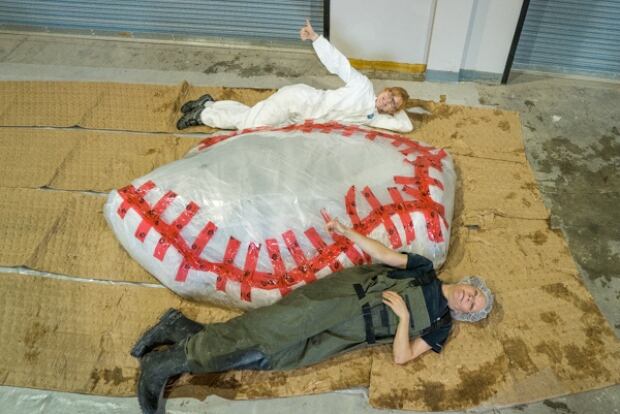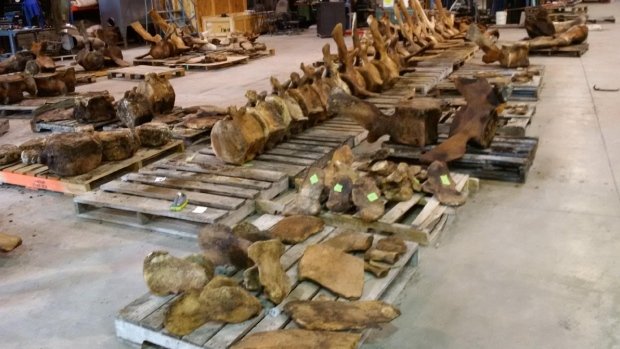The arms of the three men shake a little as they heave the blue whale vertebrae into place on a metal spine created to display the skeleton of the world's largest mammal.
These next weeks are the culmination of nearly two years of painstaking preservation done by the Royal Ontario Museum.
It also marks a rebirth of sorts for two of the nine whales killed by sea ice in the St. Lawrence Seaway.

In order to clean the bones of the blue whale specimens, the ROM team immersed them in compost in 2014. (CBC)
The ROM hopes to turn the 2014 tragedy into an opportunity to teach the general public about the health of the oceans and the evolution of the greatest beings living in them.
"Most people, they're probably aware of blue whales but they're not really aware of just how big and how unusual some of their adaptations are," ROM mammalogy technician Jacqueline Miller said. "Whales, in general, have a long history of evolutionary change. We're hoping to bring some of that to the public.

Two whales were preserved. One will be on display at the ROM, while the other will go to Memorial University in Newfoundland. (CBC)
The project got up to speed in the spring of 2014. That's when a team from the ROM began carving up the two 150-tonne carcasses, which had already begun to bloat on the shore. The bones were scraped clean and then immersed in containers of compost for nearly two years to remove the last of the flesh.
This blue whale heart will be on display at the ROM; it weighs more than 180 kilograms. (Stacey Kerr)
The heart of one of the whales has also been preserved. At 180-kilograms it weighs more than two "average" Canadian men.

The whale's heart weighs as much as two average Canadian men. (Stacey Kerr)
The exhibit launches March 11.





